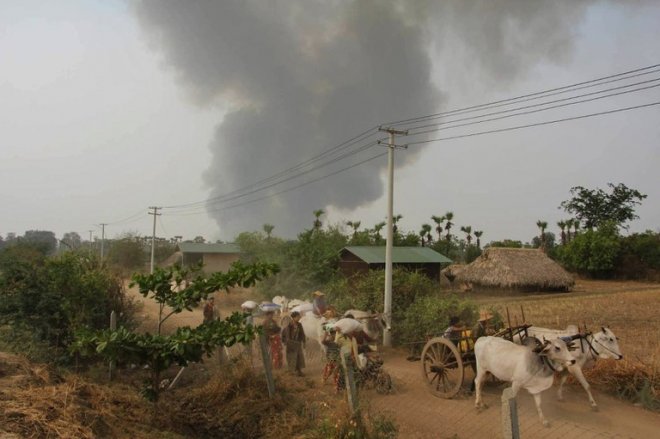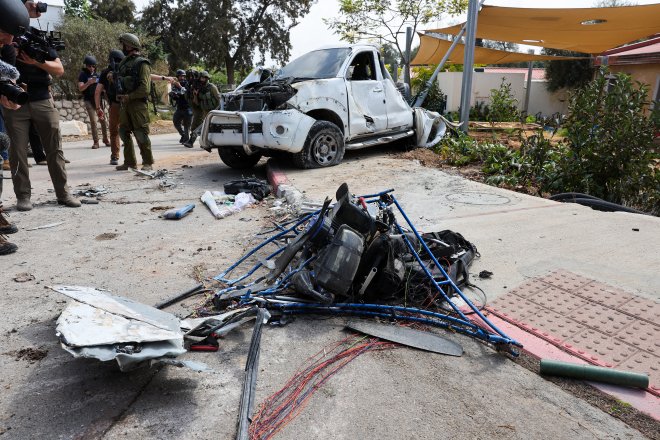Report: Almost 700,000 people in Myanmar have fled their homes since January
Intense fighting has caused the number of internally displaced persons in Myanmar to grow by more than 680,000 between January and April 20, according to independent research group ISP-Myanmar.That number is more than a quarter of the total number of people uprooted after the February 2021 military coup d’etat, the group said.
More than 2.6 million have fled their homes since the coup, mostly due to armed conflict between military junta troops and the joint forces of the People’s Defense Forces and ethnic armed organizations, according to an April 27 report from the group.
That’s in addition to the 1 million Rohingya who have fled across borders in recent years to take shelter in Bangladesh, India and Thailand.
More than 1.3 million refugees have left Myanmar’s northern Sagaing region. Magway region and Kayah state have the second and third largest number of refugees.
The United Nations Office for the Coordination of Humanitarian Affairs, or UNOCHA, told Radio Free Asia that it plans to provide humanitarian assistance to 4.5 million people in Myanmar in 2023, including 1.6 million people who have fled their homes.
The U.N. continues to face obstacles in distributing humanitarian aid, cutting through red tape, defending against attacks on aid workers and raising funds, UNOCHA said in an email to RFA.
 Residents flee Inn Sa in Sagaing region, Myanmar, after junta troops raided and burned nearly the whole village on April 21, 2023. Credit: Citizen journalist
Residents flee Inn Sa in Sagaing region, Myanmar, after junta troops raided and burned nearly the whole village on April 21, 2023. Credit: Citizen journalist‘Clear grounds with nothing in it’
Junta troops have been carrying out fierce area-clearing operations in Sagaing recently, an Inn Pat village resident said.
“There are more than 600 or 700 houses in our village. The junta has burned it down four times,” the resident said. “Nearly 200 houses were burned and the residents whose houses were damaged in the fire can longer live in their own homes.
“The places where their houses used to stand are clear grounds with nothing in it,” he said.
The junta has burned down nearly 5,000 civilian houses in 70 villages in Khin-U township since the coup, and refugees are having trouble with drinking water shortages, he said.
In the same way, junta troops are clearing areas in Magway, which is adjacent to Sagaing.
On March 28, more than 100 houses were burned down in Kin Mun Chon village in Salin township. A resident said villagers have been surviving in the jungle in very poor conditions since then.
‘Direct threat to children’s survival’
In Kayah state, where around two-thirds of the total population have fled their homes, residents said junta troops have been conducting military operations and restricting the transportation of food and medicine.
The Progressive Karenni People Force, or PKPF, announced on May 1 that 134 refugees from Kayah had died as a result of insufficient food and medicine and from the fighting.
Banyar, director of the Karenni Human Rights Organization, criticized the junta for deliberately creating difficulties for refugees and local residents.
“It is becoming more and more difficult for pregnant mothers to get the necessary vaccinations due to shortages of medicines and the junta’s blockage of medicine transport,” he said. “In addition to this, there are shortages of vaccination for newborn babies, too. This is a direct threat to children’s survival.”
The junta’s chairman of the humanitarian aid management department and the minister for international cooperation, Ko Ko Hliang, did not immediately respond to a phone message left by RFA.
Translated by Myo Min Aung. Edited by Matt Reed and Malcolm Foster.
|
本篇 |
不想錯過? 請追蹤FB專頁! |
| 喜歡這篇嗎?快分享吧! |
相關文章
AsianNewsCast
























